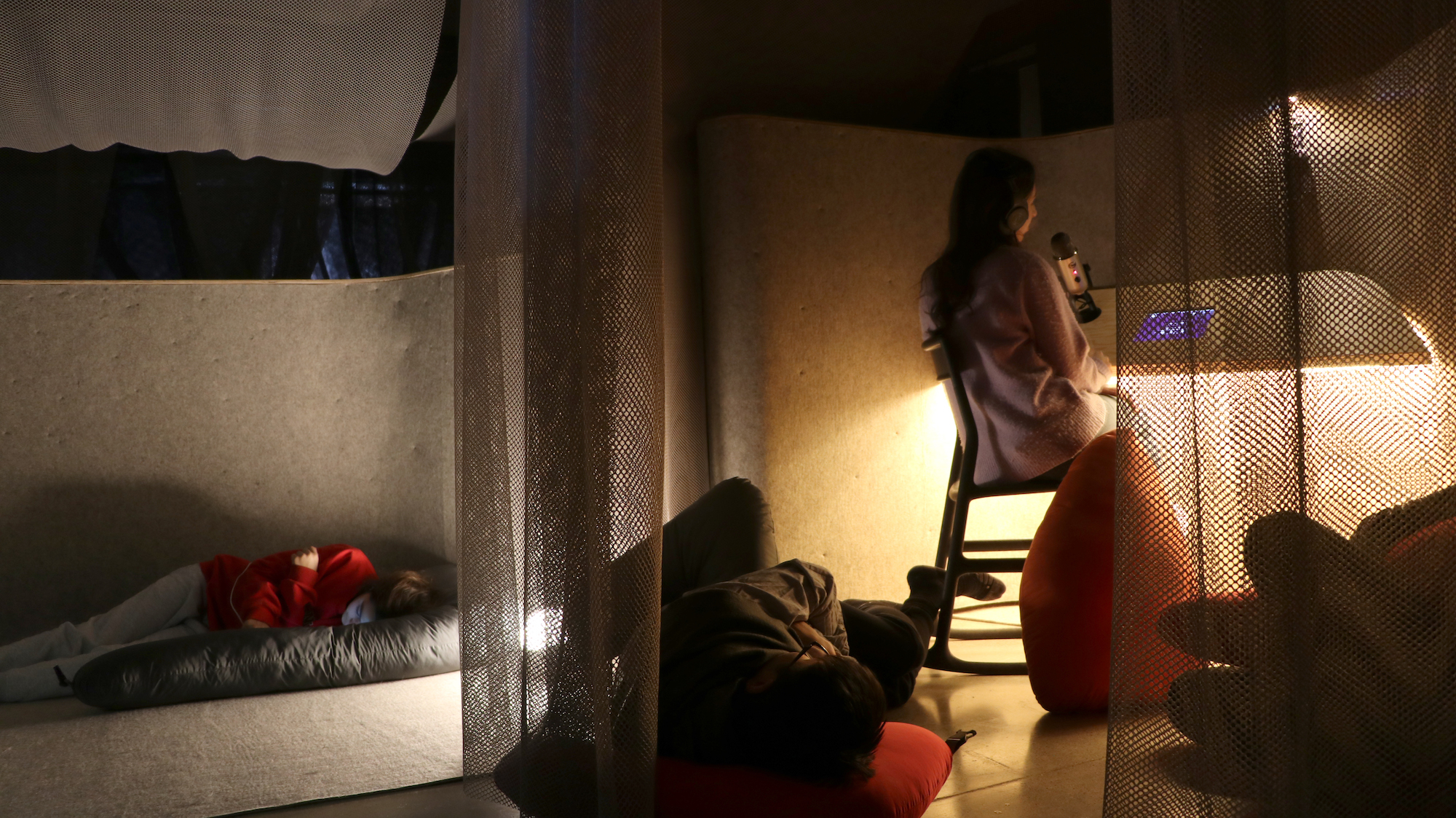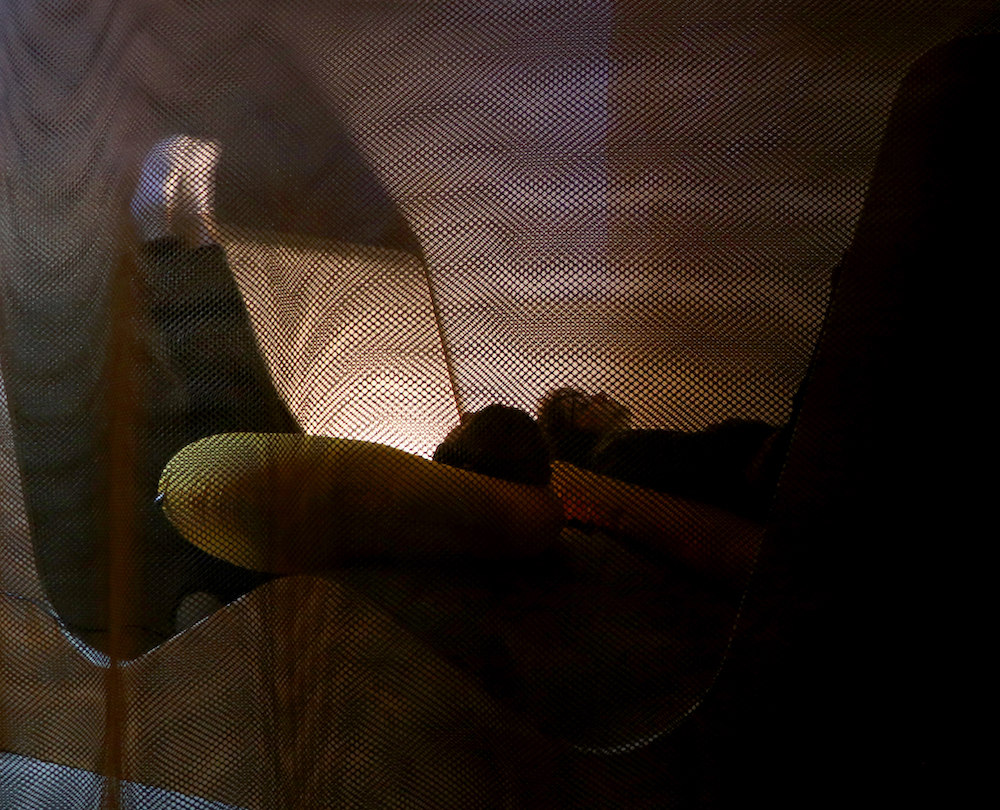
27.11.19 - The Daniels Building now has a place where you can record your dreams
Earlier this month, the Daniels Faculty celebrated the opening of New Circadia — a soft, cavelike environment where visitors are encouraged to linger, relax, and even nap.
In this environment devoted to repose, it makes a certain kind of sense that there would be an area designed solely for preserving memories of what is arguably the best part of sleeping: dreams.
That's what Oneiroi, an installation by assistant professor Petros Babasikas and artist Chrissou Voulgari, was made for.
Oneiroi consists of two booths located inside New Circadia's environment in the Daniels Building's Architecture and Design Gallery. One of the booths is a recording station, with a microphone and a small computer screen. Visitors are invited either to narrate a recent dream (what they can recall of it, at any rate) into the microphone, or to use the computer screen to type up a written description of a dream. The other booth is a listening station, where visitors can lie back on a recliner-like surface, put on a pair of headphones, and hear readings of dreams recorded by others (including the written ones, thanks to some text-to-speech software).
Users can also submit dream descriptions on the project's website, Oneiroi.ca. And the website contains a running archive of all the dream descriptions submitted so far.
"What people write is not necessarily what they saw in their sleep," Babasikas says. "People are processing what they saw and rewriting it. It's not just about memory; it's about remembering and retelling. The Oneiroi project asks: 'What is a space of memory and storytelling in the deep Digital Age, and how do we participate in making it?'"

Inside Oneiroi's listening station, in the Architecture and Design Gallery at the Daniels Building.
The project is a followup to an earlier work of interactive art that Babasikas and Voulgari designed, called Dreamgrove. Like Oneiroi, Dreamgrove involved collecting descriptions of dreams on a website. Visitors to an installation at the Athens Byzantine and Christian Museum (and, later, the Hong Kong and Shenzen Biennale) could listen to the dreams being read aloud. The project ran from 2008 to 2010.
Now, with Oneiroi, Babasikas has noticed something about the dream descriptions being submitted by users: they tend to be shorter than the ones submitted to Dreamgrove a decade ago. "I think people are now used to writing online in more abbreviated, and perhaps precise ways," he says.
As more people contribute dreams, the Oneiroi website will become what Babasikas refers to as an "atlas" — a cloud-like representation of the dreams of hundreds of anonymous strangers, all linked together by keywords, blurring the line between the internet and the collective unconscious.
To contribute your dream, visit Oneiroi.ca or come to the Architecture and Design Gallery at One Spadina. (And follow Oneiroi on Instagram.)
Photographs by Chrissou Voulgari.

